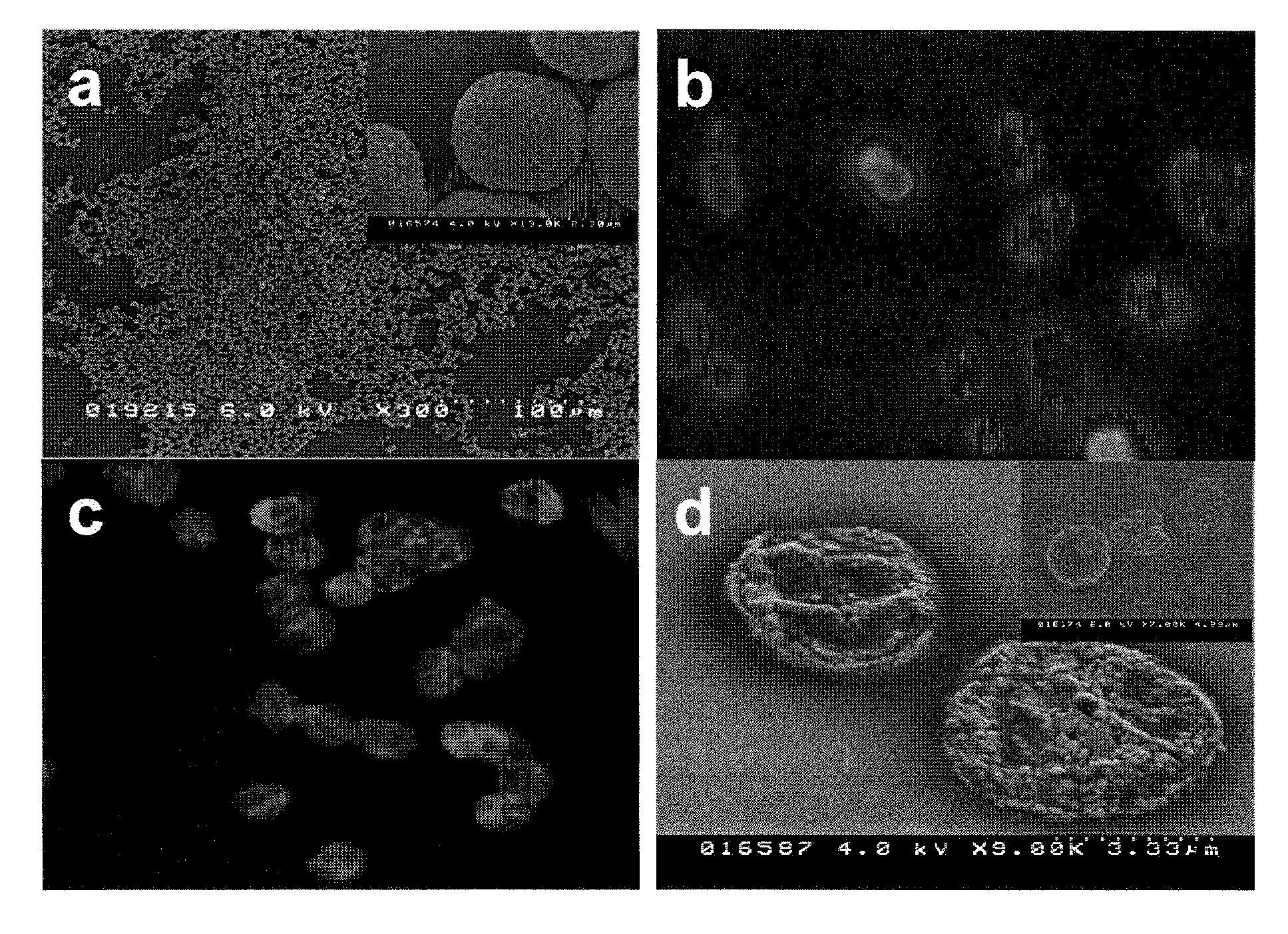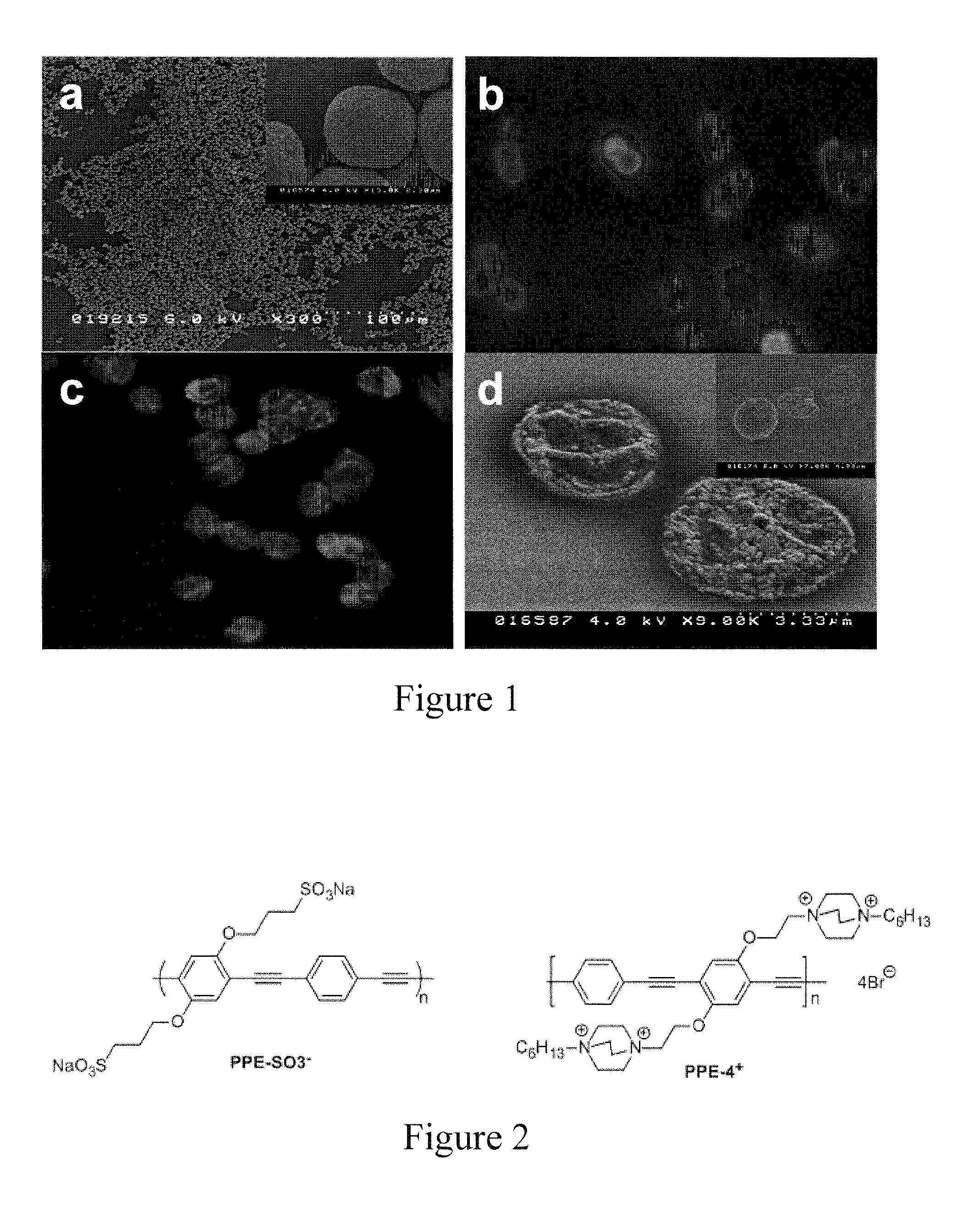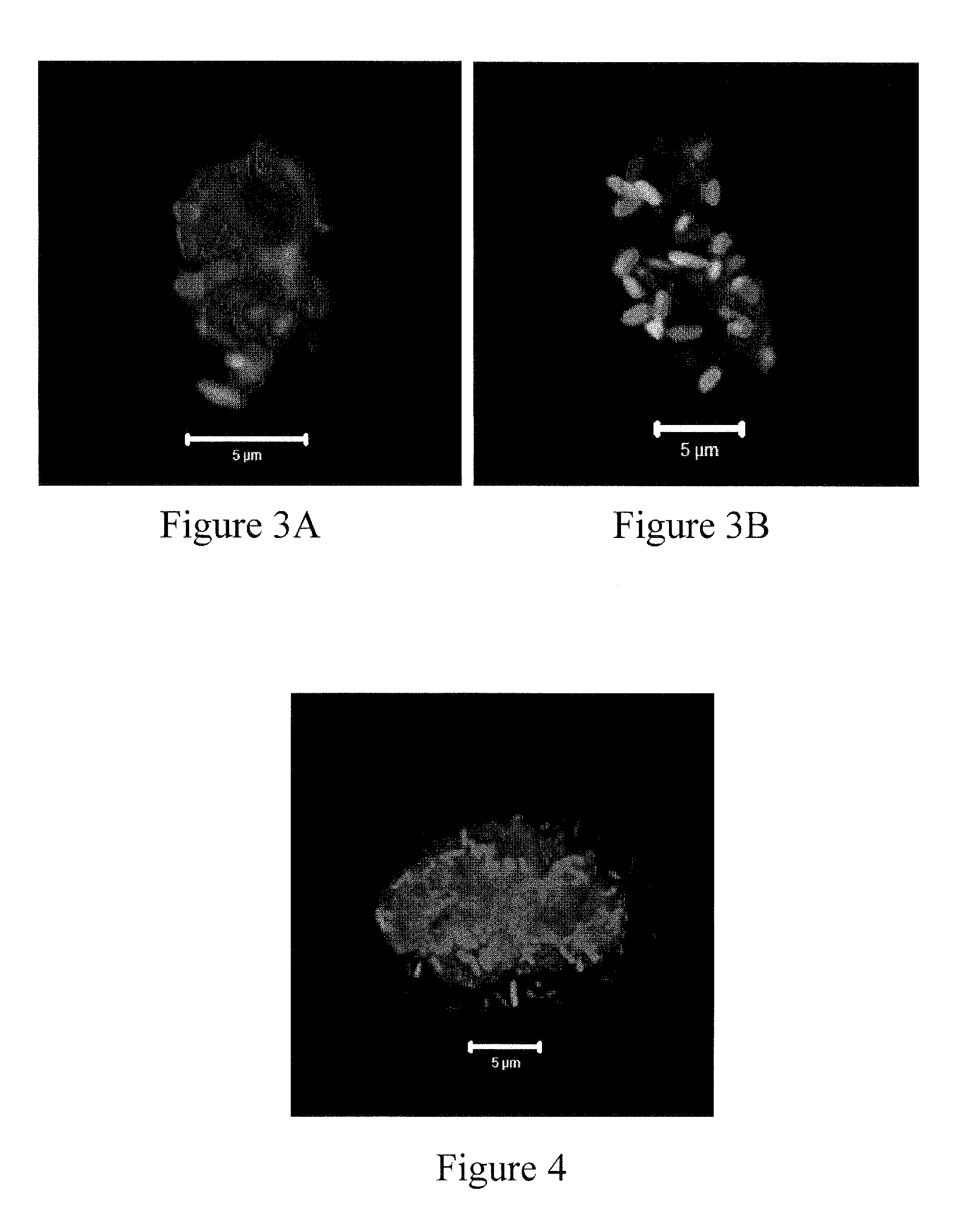Conjugated polyelectrolyte capsules: light activated antimicrobials
a technology of conjugated polyelectrolyte and light-activated antimicrobials, which is applied in the direction of powder delivery, conductive materials, granular delivery, etc., can solve the problem that the technology can suffer from toxicity to other organisms than the microbes
- Summary
- Abstract
- Description
- Claims
- Application Information
AI Technical Summary
Benefits of technology
Problems solved by technology
Method used
Image
Examples
Embodiment Construction
[0016]Embodiments of the invention are directed to hollow conjugated polyelectrolyte (HCPE) microcapsules that have antimicrobial properties when irradiated with electromagnetic radiation. In an embodiment of the invention, the HCPE microcapsules display effective antimicrobial action against bacteria, viruses, fungi or other microbes that associate with the HCPE microcapsules, which acts as an efficient trap where the trapped microbes are efficiently killed upon irradiation. The microbes can be entrapped within or attached to the external surface of the HCPE microcapsules. Not to be bound by a theoretical mechanism, the light-activated antimicrobial activity is consistent with the generation of singlet oxygen and possibly successor reactive oxygen intermediates at the photoexcited HCPE microcapsule upon irradiation.
[0017]In one embodiment of the invention, the HCPE microcapsules comprise a plurality of layers of polyelectrolytes of complementary charge where at least one polyelectr...
PUM
| Property | Measurement | Unit |
|---|---|---|
| size distribution | aaaaa | aaaaa |
| size distribution | aaaaa | aaaaa |
| size | aaaaa | aaaaa |
Abstract
Description
Claims
Application Information
 Login to View More
Login to View More - R&D
- Intellectual Property
- Life Sciences
- Materials
- Tech Scout
- Unparalleled Data Quality
- Higher Quality Content
- 60% Fewer Hallucinations
Browse by: Latest US Patents, China's latest patents, Technical Efficacy Thesaurus, Application Domain, Technology Topic, Popular Technical Reports.
© 2025 PatSnap. All rights reserved.Legal|Privacy policy|Modern Slavery Act Transparency Statement|Sitemap|About US| Contact US: help@patsnap.com



